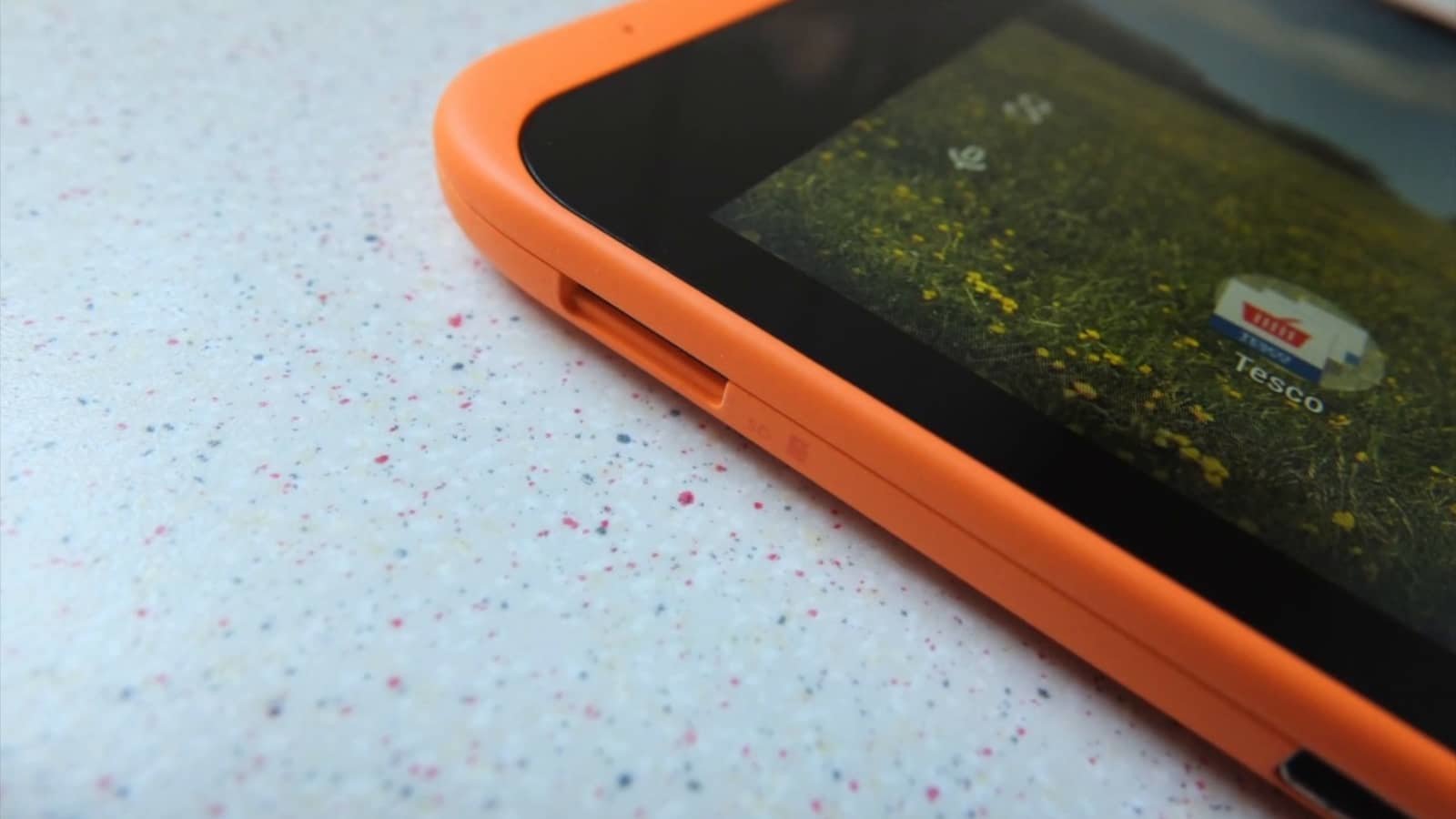We’ve just finished work on a truly unique and exciting technology project, sonic branding and designing interface sounds for Tesco’s eagerly awaited Hudl2 Android tablet.
Commissioned by Tesco Connected Products, we were tasked with producing a strong new audio identity for the second iteration of the device, centred around the concept of ‘happy technology’, with a clear and defined British slant. Working closely in collaboration with sonic branding specialist, Paul Fulberg and brand marketing expert Martin Lawless, this would involve producing an audio mnemonic for the Hudl brand as the main focus to be used both on device and in all advertising. The second phase would be to produce a complimentary sound-set for the device itself to augment user functionality, including e-mail notification, volume up and down, battery low, camera usage and alarm sounds amongst others.
Short and Sweet
Composing and sound-designing very short sounds like this, it’s important to be concise and make each note really count and contribute to the overall whole. You simply don’t have time to be vague or to musically waffle: you need to create the right impression from the start alongside trying to establish an often quite complex emotional or mood standpoint in an incredibly succinct and simple way.
It was key not only that each sound therefore presented the Hudl’s core values openly, but for them also to have a definable form, in terms of a beginning, middle and end (or resolve). Whilst this may seem difficult within a second or two, it is absolutely necessary as it takes the listener on an, albeit short, yet recognised and understood journey. More importantly too in this instance, it provided the user reassurance that something has happened, i.e it had to have the functional quality that is central to these types of sounds.
We achieved this where necessary, by using cadential phrases in both the chords and melody so that the music would feel resolved with a tangible sense of what in musical terms we call, ‘arrival’, usually obtained by finishing on the first chord of the key. Style-wise we knew the sounds would largely use strong, easily digested and recognised harmony and melodic intervals, most likely taken from the major scale and it’s derivative modes, so it would be finding a ‘voice’ for these notes that would help define if our ideas would be successful or not.
You’re the Voice, Try and Understand it…
We would need to create a sound specific enough to the Hudl brand so as to feel ‘own-able’, yet simple enough to feel easily understood. Whilst most mnemonics sound simple, invariably depth and dimension is added via the layering of multiple instruments playing the same pattern, melody or rhythm to create a unique, homogenous sound (for example the Intel identity, arguably the most famous of all audio mnemonics, contains over 40 separate parts all layered together).
We felt it important that the Hudl product despite being a technology product, was very much a human one i.e it helps families interact with each other and share moments together, it isn’t a device that coldly number-crunches or is a workhorse in the background. It is fun and engaging, and that is what our music and sounds should sound like. So an approach that used organic instrumentation at it’s core, as opposed to overtly synthesised ones, seemed certainly to lend itself to this brief.
We knew one of our challenges would be producing sounds that would ‘translate’ well on device, which despite the Dolby upgrade, would still be reproduced through fairly small speakers, meaning some detail and of course low end extension would be lost. Considering the key word from the brief: happy, we began brainstorming instruments that are widely associated with styles, genres or generally moments that are fun:
- Steel Pan
- Kazoo
- Ukulele
- New Orleans Brass Band
- Optigan / Carousel Organ
- Whistling
- Clapping
- Tambourine
- Flute
- Pizzicato Strings
- Sleigh Bells
These instruments, whilst not all entirely applicable to this exact brief, we felt to be ones that have natural connotations of brightness, upbeat positivity or a good time. For example, you very rarely hear a melancholy ukulele song or sad whistling, for example. We narrowed our results down further as we also began looking at ways instrumentation could give our sounds a simple, British wit and authenticity too. Following a social media poll we conducted about what customers perceive being British is about, we set about sampling various objects and scenarios using our Foley and sound design experience, that were deemed intrinsically British by nature to compliment these instruments. Some ideas we recorded included a broadsheet newspaper, strawberries and cream, jam jars, an 99 ice cream cone, a cricket bat and a teaspoon amongst many others.
We were unworried about the basic actual sound these would produce but were simply looking to find raw audio material we could build upon, process, convolute through eachother and generally use as a sonic nucleus for the various device sounds.
Let’s Get Smashed!
We also presented to Tesco an idea of sonic recycling: basically creating new sounds for the new device built out of material recorded smashing up the old Hudl1 tablet and much to our reverence, Tesco gave us the green light to do so.
We love getting our hands dirty and armed with hammers, saws, violin bows, orchestral beaters and more, the sessions yielded a whole range of interesting sounds, both rhythmical and some with an inherent pitch, which we could use to build multi-sampled instruments out of to play melodies and chords!
Now we had a genuinely unique palette of sounds which would provide us with a strong base to hang our ideas on or around.
The Boot Up Sound / Main Logo
Any good mnemonic should be able to stand up or at least be recognisable with just it’s main central part, so each idea we shortlisted had to have a very clear core. We approached the idea so that the logo could be broken down into the very simplest form i.e just one instrument playing the melody. This way, it’s easily hummable. Only then could it be developed out to have a denser more engaging sound, confident the idea would remain focussed.
The main mnemonic, to be used primarily as a boot-up sound, was developed out of one of the initial ideas we presented when we were pitching for the job, entitled ‘Whistler’. The melody has an opening and a resolve, and was designed to be a sort of musical conversation made of an opening statement, followed by an agreement of the statement. The resolve in itself also worked standalone, so effectively the longer five note melody could be broken down to just the last two notes, sonically ‘spelling out’ the word ‘Hudl’. 
As the startup sequence was quite long, we had to balance memorability with what came to be known as the annoyance factor. Generally speaking, the more you hear any sound the more irritating it risks becoming, so walking a tightrope between making an impression, establishing the brand values sonically and not being annoying or disruptive, in the case of the main notification sound, was crucial.
We helped to circumnavigate this issue by writing a shorter version into the O/S hardware, so that the long version of our mnemonic would play on initial start-up, and all subsequent re-boots would play just a short version using just the two final notes as outlined above. Following the initial period focussing on the main logo boot up sound, we switched our attention to the remaining dozen or so sounds. This phase was a great time of creative exploration and a solid body of options were produced before we narrowed the selection down to really give the Hudl brand a distinct and discernible flavour. Again, here the key thing would be balancing functionality with a gentle and non-disruptive feel: these short function sounds had to work without being overly ‘shouty’ about the way they achieved their desired result.
The entire project was wrapped within a six week time frame, start to finish, including a number of musical tracks also produced for Tesco’s launch campaign and introductory videos. The original tablet shifted over 750,00 units in a year since its launch last September and was Tesco’s fastest selling tablet ever. Early reviews suggest this brand new overhauled version, with it’s full HD 1,920 x 1,200 resolution screen, full Dolby upgrade, Intel Atom Quad Core Processor, Android Kitkat 4.4.2 OS and Dual Band Wi-Fi will be a similar hit.
The Hudl2 hits stores on Thursday 9th october at 9am. Get yours online here. #LetsHudl




